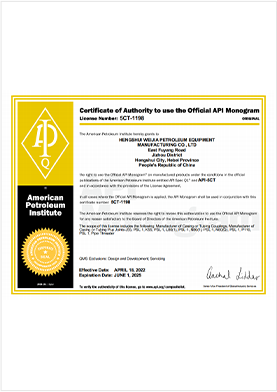Exploring the Benefits and Applications of API Tubing Couplings in Oil and Gas Industry
Understanding API Tubing Couplings Essential Components in Oil and Gas Drilling
In the oil and gas industry, the efficiency and safety of drilling operations are paramount. One crucial component that plays a significant role in these operations is the tubing coupling. Specifically, API (American Petroleum Institute) tubing couplings are widely used to connect sections of tubing in drilling and production activities. Understanding the importance of these couplings, their design standards, and their applications is essential for anyone involved in the oil and gas sector.
What Are API Tubing Couplings?
API tubing couplings are mechanical fittings designed to connect two lengths of tubing, allowing for the transmission of fluids between them. They are manufactured according to standards set by the American Petroleum Institute, which ensures uniformity and reliability in the products used across the industry. The primary function of these couplings is to maintain the structural integrity of the tubing, facilitating safe and efficient fluid transfer.
Design and Specifications
API tubing couplings come in various sizes and specifications, tailored to meet the demands of different drilling environments. These couplings are typically made from high-strength steel to withstand extreme pressure and abrasive conditions found in oil and gas reservoirs. The design of API couplings includes precise threads that ensure a secure fit, preventing leaks and ensuring the durability of the connection.
One of the critical aspects of these couplings is their ability to withstand significant tensile and compressive forces. API standards categorize tubing and couplings based on their mechanical properties, ensuring that they are suitable for varying depths and pressures. The API classifications include different grades like H40, J55, and P110, each indicating the minimum yield strength and corrosion resistance properties.
Importance of API Tubing Couplings
The significance of API tubing couplings in drilling operations cannot be overstated. They are essential for several reasons
api tubing couplings

1. Safety Proper connections help prevent leaks, which can lead to catastrophic failures, including blowouts and environmental contamination. API couplings adhere to rigorous safety standards, ensuring reliable performance during drilling operations.
2. Efficiency Connectors that are designed to fit seamlessly with minimal friction reduce the time and effort required for assembly and disassembly. This efficiency translates into reduced operational costs and improved productivity.
3. Durability API couplings are designed to withstand the rigors of harsh drilling environments. Their resistance to high pressures and corrosive fluids ensures a long lifespan, reducing the need for frequent replacements.
Applications in Oil and Gas Drilling
API tubing couplings are primarily used in the oil and gas drilling process, specifically in the completion phase where the production tubing is installed. They ensure that the production flow lines are continuous and capable of handling varying pressure levels as oil and gas are extracted from the wells. Moreover, these couplings facilitate the installation of downhole tools and equipment, making them indispensable in both new drilling sites and maintenance of existing wells.
Additionally, beyond conventional drilling practices, API tubing couplings are also utilized in unconventional reservoirs, including shale gas and tight oil formations. Their ability to maintain integrity under complex conditions contributes significantly to the overall success of extraction projects.
Conclusion
In summary, API tubing couplings are fundamental components in the oil and gas industry, ensuring safe, efficient, and reliable connections between tubing sections. Their adherence to API standards guarantees performance under challenging conditions, making them vital for both drilling and production operations. As the demand for oil and gas continues to rise, the role of these couplings will only grow, underscoring the need for technological advancements and innovation in their design and application. Understanding API tubing couplings is essential for industry professionals dedicated to thriving in this competitive and ever-evolving field.
-
Tubing Crossover - API Compatible, Custom Sizes, In StockNewsNov.10,2025
-
Tubing Coupling | High-Strength, Leak-Proof Steel CouplingsNewsNov.10,2025
-
Wholesale API Threading Casing Coupling | API 5CT, Fast ShipNewsNov.10,2025
-
Pup Joint Supplier | API Certified, Custom, Quick ShipNewsNov.10,2025
-
Pup Joint Manufacturers | Precision Machined, Fast DeliveryNewsNov.10,2025
-
Tubing Coupling | Precision Steel, Leak-Proof, Fast DeliveryNewsNov.03,2025







